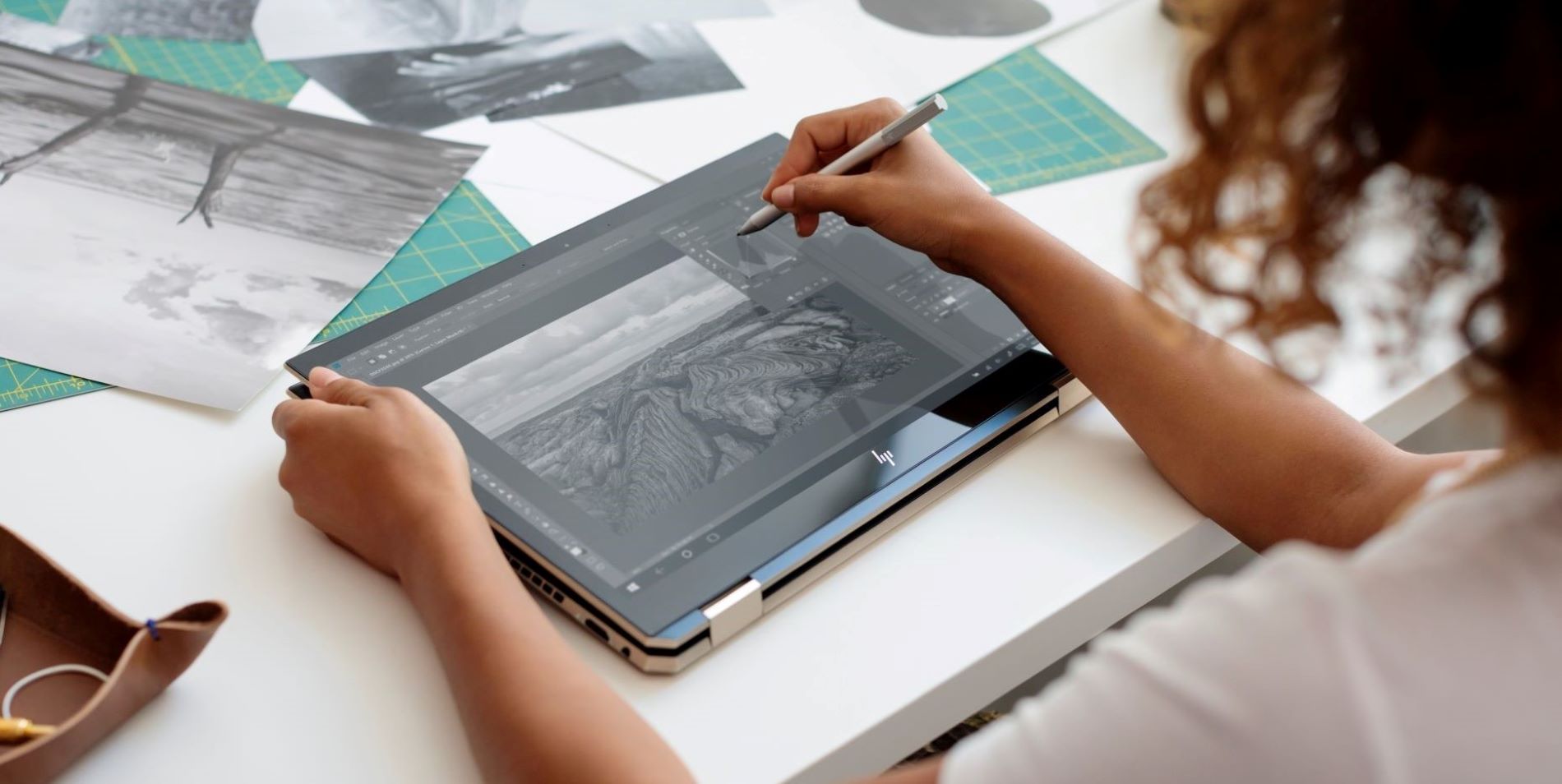Thank you for visiting the AUSTRALIA HP Store
-
Contact Us
CONTACT USCall us
- Sales
- 1300 540 516
- Technical support
- 13 23 47
Exc. pubic holidays
Chat with us- Sales
- 61288061500 (WhatsApp)
-

- Post Sales
- 61288061700(WhatsApp)
Exc. pubic holidays
Live product demo
- My Account
Search
Top HP Monitors for Your Small Business


Contents
Factors to consider when choosing a monitor
When choosing a monitor for the small business context there are a few factors to take into consideration. The importance of each will vary depending on the type of work your business engages in.
Screen size and resolution
Keeping it simple, screen size is how big the display is while resolution is how many pixels there are.
A smaller screen allows for a more compact workstation and greater flexibility in the layout. It’s generally more budget-friendly, but going too small can cause squinting and headaches. While a larger screen can be more expensive, it’s easier on the eyes and gives rise to the opportunity to multitask by having multiple programs open and visible at once.
When it comes to resolution, lower-resolution screens are generally cheaper and work well with older or less powerful graphics processors. The downside is you lose visual clarity which may be important in an industry involving the use of high-quality images, videos and graphics. If your work is text- or spreadsheet-based, then a 1,920 x 1,080 pixels screen might be okay, but otherwise, it’s worth considering something with higher resolution.
A smaller screen allows for a more compact workstation and greater flexibility in the layout. It’s generally more budget-friendly, but going too small can cause squinting and headaches. While a larger screen can be more expensive, it’s easier on the eyes and gives rise to the opportunity to multitask by having multiple programs open and visible at once.
When it comes to resolution, lower-resolution screens are generally cheaper and work well with older or less powerful graphics processors. The downside is you lose visual clarity which may be important in an industry involving the use of high-quality images, videos and graphics. If your work is text- or spreadsheet-based, then a 1,920 x 1,080 pixels screen might be okay, but otherwise, it’s worth considering something with higher resolution.
Connectivity and ports
Having the right connectivity options and ports allows you to seamlessly integrate a new monitor into your existing setup. Here are some of the connectivity options a new monitor may come with.
- High Definition Multimedia Interface (HDMI)
- DisplayPort (DP)
- Video Graphics Array (VGA)
- Digital Video Interface (DVI)
- USB
- USB-C
Display technology
When you start researching which monitor to buy, you’ll no doubt see various three- or four-letter abbreviations used to describe the display technology. Here’s an overview to help you make sense of what these letters mean in a practical sense.
- A liquid crystal display (LCD) uses liquid crystals for the display and a backlight to light them up. Most monitors available on the market today are an improved form of LCD screen, including the four we’re going to look at next.
- Light emitting diode (LED) screens use LED light arrays to light up the liquid crystals so that the pixel colours are visible. It has become one of the most common types of display technology used in a business context due to the clear images and budget-friendly price point.
- In-plane switching (IPS) screens align the liquid crystals inside the monitor in a slightly different way that creates greater colour accuracy and a wider range of viewing angles. These screens tend to be favoured by businesses that need colours to be displayed accurately, including graphic designers and digital media editors.
- Vertical alignment (VA) screens are used for TVs and monitors. As the name suggests, the crystals are vertically aligned, then tilt to allow light to pass through. These display panels tend to have an advantage when it comes to contrast and brightness.
- Organic light emitting diode (OLED) screens use technology that allows each individual pixel to produce light, rather than using a larger backlight to illuminate them. This results in highly accurate colour and contrast, which is beneficial to businesses where graphics are important. It’s also a more compact design meaning the monitors can be thinner.
Top HP Monitors for small businesses
HP has many different monitors on the market designed for a range of purposes. To narrow it down for you, here are three of the series currently on offer that might be right for your business.
HP EliteDisplay E-series

Specifically designed for businesses, the HP EliteDisplay E-Series has something for everyone. Created with ergonomics in mind, each monitor has the ability to pivot and swivel on the stand and has tilt and height adjustments. With the exception of the HP E45c Curved Monitor, the entire series features edge-lit IPS screens for greater colour accuracy, as well as DisplayPort and HDMI inputs.
To make the monitors more comfortable for long-term use, anti-glare and blue light controls have been inbuilt. Some also feature HP Eye Ease, an innovative solution that cuts blue light levels without changing the colour accuracy or adding a yellow tint to the display.
In terms of screen size and resolution, you can get a full high-definition (FHD) or quad high-definition (QHD) screen ranging up to 28 inches in size for under $500. A bit above that price point, there are widescreen curved monitors that have integrated conferencing features and 4K ultra high-definition (UHD) screens.
To make the monitors more comfortable for long-term use, anti-glare and blue light controls have been inbuilt. Some also feature HP Eye Ease, an innovative solution that cuts blue light levels without changing the colour accuracy or adding a yellow tint to the display.
In terms of screen size and resolution, you can get a full high-definition (FHD) or quad high-definition (QHD) screen ranging up to 28 inches in size for under $500. A bit above that price point, there are widescreen curved monitors that have integrated conferencing features and 4K ultra high-definition (UHD) screens.
HP ProDisplay series

For a more budget-friendly range that can handle day-to-day office tasks take a look at the HP ProDisplay Series. Most of the range comes in at $350 and under so it’s a good place to start if your small business activities are largely text-based. Choose between a VA or IPS screen, and HDMI and DisplayPort or HDMI and VGA connection ports. All of the screens come with ergonomic adjustments as well as anti-glare and low blue light mode. Some also have inbuilt speakers.
The two more advanced screens in this range are the HP P32u G5 USB-C Monitor and the HP P34hc USB-C Curved Monitor. The HP P32u has all the ergonomic features of the rest of the range as well as a 31.5-inch QHD screen that supports up to 16.7 million colours. Taking things up a notch is the curved HP P34hc monitor. It has a 34-inch wide-QHD screen that offers a more immersive experience and makes it easy to multitask, increasing productivity. On top of this, there are multiple inbuilt ports to provide an advanced range of connectivity options, including USB-A, USB-B, USB-C, HDMI and DisplayPort.
The two more advanced screens in this range are the HP P32u G5 USB-C Monitor and the HP P34hc USB-C Curved Monitor. The HP P32u has all the ergonomic features of the rest of the range as well as a 31.5-inch QHD screen that supports up to 16.7 million colours. Taking things up a notch is the curved HP P34hc monitor. It has a 34-inch wide-QHD screen that offers a more immersive experience and makes it easy to multitask, increasing productivity. On top of this, there are multiple inbuilt ports to provide an advanced range of connectivity options, including USB-A, USB-B, USB-C, HDMI and DisplayPort.
HP Z-Series professional monitors

If having a high-quality display is important to your business then the HP Z-Series of professional monitors is where it’s at. In this series, the screen resolution ranges from FHD to 4K, with most having a refresh rate of 60 Hz. They all include IPS technology, meaning you can expect greater colour accuracy and a wider viewing angle.
Once again comfort is a priority with all monitors having tilt and height adjustments and a pivot and swivel stand. The brightness can be adjusted, and anti-glare and HP Eye Ease have been incorporated into some models. Depending on the monitor you choose, there are additional features that may be beneficial for your business.
Once again comfort is a priority with all monitors having tilt and height adjustments and a pivot and swivel stand. The brightness can be adjusted, and anti-glare and HP Eye Ease have been incorporated into some models. Depending on the monitor you choose, there are additional features that may be beneficial for your business.
- Integrated speakers and microphone
- Inbuilt webcam
- Wide, curved display for easy multitasking
- VESA mountable
- Various connectivity combinations including USB, HDMI and DisplayPort
Choosing the perfect monitor
Which monitor is the right one for your small business will vary depending on a few factors.
Features
One of the most significant factors is which features you need. It will be impacted by the activities you plan to use the monitor for and what your existing setup is involved. Features to consider include screen size, resolution, display type, connectivity options, ergonomics and screen adjustments.
Workspace
The monitor you select will need to fit within the constraints of the size and layout of your workspace. If it is being put on a desk you need to make sure it fits, leaves enough desk space to work and has screen settings that allow you to adjust it to the lighting in the room. If you’re planning to mount the monitor, you’ll need to check it’s compatible with the mount you want to use. Most HP monitors can be fitted to a standard VESA mount.
Budget
Naturally, budget is going to play a part in deciding which monitor to get. It’s generally best to get the highest-spec monitor with the most relevant features within your price range. This can help future-proof the purchase as your business grows and computing technology develops.
Summary
When developing a computer setup for your small business it’s beneficial to look at each component and think about how it functions individually as well as within the wider setup. Choosing the right monitor can help increase productivity within your workplace, ultimately helping the business thrive.
About the Author: Telicia Campain is a contributing writer for HP Tech Takes. She is a former teacher who currently lives aboard an international sailing vessel. Telicia creates content for a variety of industries including technology, education, finance, and travel.
About the Author: Telicia Campain is a contributing writer for HP Tech Takes. She is a former teacher who currently lives aboard an international sailing vessel. Telicia creates content for a variety of industries including technology, education, finance, and travel.
Products purchased through this store are sold and fulfilled by Ingram Micro Pty Limited
CONTACT US
Call us
- Sales
- 1300 540 516
- Technical support
- 13 23 47
Exc. pubic holidays
Chat with us
- Sales
- 61288061500 (WhatsApp)
-

- Post Sales
- 61288061700(WhatsApp)
Exc. pubic holidays
Live product demo









